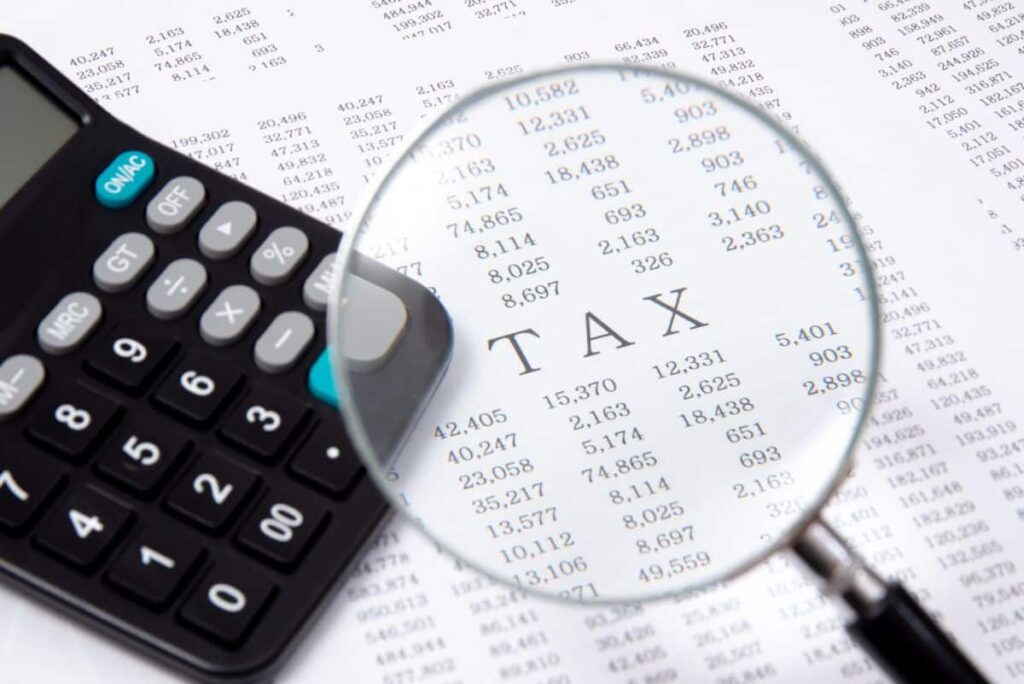Superannuation, or 'super', is vital to Australian retirement preparations. It's a retirement nest fund and a major tax issue in Australia. You may make better retirement savings decisions by understanding superannuation taxes. Here are some Australian superannuation tax information.
Contributions and Their Tax Treatment
Australian superannuation is a journey, especially when understanding the tax effects of your contributions. We need a clear map; therefore, let's discuss contributions and taxation.
1. Understanding Concessional Contributions
Concessional or 'before-tax' contributions include mandatory employer payments, salary sacrifice plans, and tax-deductible personal contributions. At the superannuation fund entrance, these contributions are taxed at 15%. However, limits must be considered. The 2023-2024 ceiling is $27,500. Exceeding this limit may result in taxes and fines.
2. The Non-Concessional Contributions Terrain
Non-concessional contributions are the 'after-tax' contributions. You contribute These funds from your take-home pay or savings, where income tax has already been paid. The primary allure is that these contributions are not taxed when entering your super fund. But, as with most financial pathways, there are limits. The cap for non-concessional contributions is set at $110,000 per year, or up to $330,000 under the bring-forward rule, applicable depending on your total super balance and age.
3. Navigating the Government Co-Contribution Scheme
If you're a low or middle-income earner, the government co-contribution remains a beacon of benefit in superannuation. The government may match up to $500 in after-tax donations from qualifying people. Your co-contribution decreases with income and decreases once you reach a set threshold.
4. The High-Income Earner Scenario
Individuals earning over $250,000 (including concessional super contributions) pay an extra Division 293 tax. High-income earners' concessional super contribution tax allowance will be reduced to 30% by this tax.
5. Spouse Contributions and Tax Offset
Supporting your partner's retirement can also have tax advantages. You can contribute to your spouse's superannuation and obtain a tax offset if they earn little. For the 2023-2024 financial year, payments up to $3,000 can be offset, progressively diminishing for incomes up to $40,000.
6. The First Home Super Saver (FHSS) Scheme
The FHSS plan uses superannuation's concessional tax status to help people save for their first house. This policy allows voluntary super payments (up to specific restrictions) to be withdrawn to buy your first house at a lower tax rate.
Planning for your financial future requires understanding superannuation tax consequences. It's a tricky road due to shifting tax and superannuation legislation. To maximise your superannuation and stay legal, seek expert financial guidance. A smart contribution strategy today can ensure a pleasant and secure retirement tomorrow.
Tax on Super Earnings
Australian superannuation typically involves the difficult but important question of tax on super earnings. While complicated, this component of superannuation affects retirement savings growth.
Your super's accumulation or pension phase determines how super earnings are taxed. The accumulation phase of establishing your super involves taxing super fund investment returns at a maximum of 15%. This rate is far lower than personal income tax rates, making retirement savings tax-effective. However, this 15% tax rate applies to your super fund's investment income, including dividends from shares, interest from bonds, rental income from property investments, and capital gains on fund assets sold.
Taxes improve when your super enters the pension phase, usually when you retire and start earning a pension. If you qualify for a tax-free retirement pension, superannuation fund earnings are tax-free during this period. Capital gains from selling fund investments and investment income are tax-free. This benefit emphasises superannuation's retirement savings potential.
Another consideration is super fund capital gains taxation. Capital gains tax discounts are available to super funds that retain assets for more than 12 months before selling. Only two-thirds of the capital gain is taxed, lowering the maximum tax rate to 10%.
The amount of concessional and non-concessional super contributions you can make each year is capped. Planning your contributions is important since exceeding these limitations might result in extra taxes.
Despite the benefits, superannuation tax may be complicated. The landscape varies with laws and economic situations. Staying educated and consulting a financial professional can be beneficial. They can assist you in understanding superannuation tax and develop plans to optimise retirement savings growth to take advantage of tax advantages and retire comfortably.
Tax Benefits of Superannuation for Retirement
Australian superannuation has tax benefits, especially around retirement. This superannuation information affects how Australians plan for their retirement.
Understanding superannuation tax benefits becomes crucial in retirement. Your super earnings are taxed 15% throughout accumulation, far lower than most personal income tax rates. This tax advantage helps your retirement funds to grow faster since super fund gains are taxed less than outside the super.
Tax advantages increase after retirement. Super pension payments and lump sum withdrawals are tax-free for anyone over 60. This key element of superannuation gives retirees huge tax benefits. After decades of paying to your super and growing your nest egg, you may access this money tax-free, giving you more financial flexibility in retirement.
Super pensions for 55-59-year-olds are taxed at a lower rate and contain a tax-free element. These concessions help smooth the transition into retirement by providing financial comfort during income and lifestyle adjustments.

Consider how your super fund's pension earnings are taxed. Investment profits in your super fund are tax-free after you start collecting a pension. Income from these investments and capital gains from fund asset sales are included. This tax exemption applies to pension withdrawals and your leftover super, which can be invested and grow tax-free.
Remember that superannuation rules and regulations might change, affecting your super's tax treatment. Staying educated and engaging a financial expert is advised. They may assist you in optimising your tax benefits and creating a happy and financially stable retirement in the changing scenario.
Superannuation tax advantages are essential to Australia's retirement income scheme. They encourage retirement savings and ensure that you may enjoy your lifelong savings with minimum taxes. Retirees gain, and the economy benefits from eliminating government-funded pensions.
The Government Co-contribution Scheme
The Australian Government's co-contribution policy encourages people, especially low-income workers, to contribute to their superannuation. This helpful action can boost retirement savings growth over time.
Under this system, the government matches qualified individuals' superannuation fund contributions up to a maximum. By encouraging people who may struggle to save for retirement, superannuation benefits are more fairly distributed throughout the economic spectrum.
If you're a low- or middle-income person and make after-tax super fund contributions, the government pays up to $500 annually. Your income and contribution determine your government co-contribution. The lowest-earners receive the most co-contribution.
Remember that the strategy phases out as income rises. This implies that when your salary approaches the qualifying level, your co-contribution lowers and finally stops. This framework guarantees the plan assists the most needy.
Participating in the government co-contribution scheme is straightforward. You don't need to apply for the co-contribution. Suppose you are eligible and have made personal super contributions. The government will compute your co-contribution when you file your tax return and pay it into your super fund.
This strategy is appealing because of its simplicity and instant retirement savings increase. This might make the difference between a modest and pleasant retirement for many Australians, especially low-income ones. It shows the government's dedication to Australians' financial security.
As with other elements of superannuation, remaining updated about specifics, eligibility requirements, and plan changes is vital. Superannuation incentives like the co-contribution plan can alter with economic conditions and policy direction.
Those who want to take advantage of this opportunity must stay informed and understand how these developments pertain to them. This proactive approach lets you maximise the government co-contribution scheme's benefits in your retirement savings strategy..
Spouse Contributions and Tax Offset
Australian superannuation spouse contributions and tax offset help couples retire financially. This feature of superannuation is especially important for couples when one partner has a lesser salary or is taking time off to raise children or care for the family.
The spouse contributions scheme is simple yet effective. It lets people contribute to their spouse's superannuation and get a tax break. This approach boosts the retirement savings of the lower-income or non-working spouse and gives the contributing spouse a tax advantage, making it a win-win.
A deeper look into its operation: You may be entitled to a tax offset if you contribute to your spouse's superannuation fund and they earn little. You can claim the maximum tax offset for donations up to $3,000 in 2023–2024, gradually declining for spouse earnings up to $40,000. This tax offset can be up to $540, a big savings and incentive to help your spouse save for retirement.
This campaign helps couples balance their superannuation funds. If one spouse takes a professional break or works part-time, their superannuation may lag. The spouse contribution method reduces this gap, helping both couples achieve financial security in retirement.
The system also prioritises adaptability. Any sum can be contributed during the financial year, but the tax offset is limited. This flexibility lets couples plan and contribute according to their finances.
You must grasp the qualifying requirements and tax offset specifics to take advantage of this offer. Income criteria, contribution restrictions, and tax offset calculations are complicated. Therefore, it may be beneficial to consult with a financial advisor to ensure that your contributions effectively boost your spouse's super balance and are efficient regarding your tax situation.
The spouse contributions and tax offset system reflect a broader understanding within the superannuation framework – that supporting one’s partner in building retirement savings is not just a personal gesture but a financially savvy one. It underscores the collaborative nature of financial planning within a relationship and provides a tangible means to work together towards a more secure and equitable retirement future.
SMSFs and Tax Considerations
Many Australians learn about Self-Managed Super Funds (SMSFs) and their tax implications to gain more control over their retirement investments. SMSFs provide freedom and individual investing ideas but also have significant tax implications that must be navigated.
SMSFs emphasise personal accountability. As an SMSF trustee, you must comply with tax and superannuation rules and manage your retirement fund. This obligation requires a detailed grasp of how these rules influence your fund's assets and profits.
Fund profits are a major SMSF tax factor. SMSF profits are taxed 15% during accumulation while members grow their retirement savings. This allows retirement savings to grow tax-effectively, like ordinary superannuation plans.
SMSFs' tax efficiency becomes apparent when they enter the pension phase. Investment income from an SMSF's assets is usually tax-free when the fund pays its members a pension. Compliance with certain conditions and regulations can yield significant retirement tax benefits.
CGT is another important issue for SMSFs. SMSF earnings from selling property or shares may be subject to CGT. If the asset has been held for over 12 months, the fund can receive a CGT reduction, lowering the capital gain tax rate. This can drastically impact fund investing strategy.
SMSF contributions are also important tax factors. Pre-tax and post-tax donations are capped. SMSF trustees must closely monitor donations to avoid excessive taxes and fines.
SMSFs allow advanced tax planning tactics such as pension structuring, tax component management, and reserve utilisation. Complex yet effective, these tactics can optimise the fund's tax efficiency.
Tremendous flexibility comes with tremendous responsibility. SMSF administration involves proactiveness and knowledge of current tax and legal requirements. Trustees must consult financial consultants or tax specialists to keep their funds compliant with changing superannuation and tax laws.
SMSFs allow people to customise their retirement savings approach and offer tax benefits. This requires careful management and a complete grasp of SMSF tax consequences and obligations. An SMSF may help build a safe and wealthy retirement for individuals who accept these obligations.

Conclusion
Finally, tax laws and regulations weave Australia's complicated but advantageous superannuation environment. A financially comfortable retirement requires understanding these distinctions. From the tax-effectiveness of concessional and non-concessional contributions to the complexities of the government co-contribution programme and spouse contributions, Australian superannuation encourages saving and provides a solid retirement foundation.
The unique tax treatment of super earnings and retirement benefits makes superannuation a crucial retirement planning tool and saving mechanism. Tax advantages during accumulation and pension phases demonstrate the government's commitment to a decent retirement.
Self-Managed Super Funds (SMSFs) bring another layer to retirement planning, providing more flexibility but needing a better awareness of tax and regulatory issues. SMSFs are the pinnacle of individualised retirement planning but require more management.
Australia's retirement savings strategy relies on superannuation tax statistics. To achieve equitable and appropriate retirement outcomes for all Australians, they combine individual retirement savings responsibility with government support.
As superannuation changes, being informed and obtaining competent counsel are crucial. This helps people comply with rules and optimise their superannuation benefits, making retirement more secure and pleasurable. With its many tax realities, superannuation is more than a financial need; it's an investment in one's future, a pledge to a life of security, stability, and the freedom to enjoy the benefits of a lifetime of hard work.
Content Summary
- Superannuation, or 'super', is a crucial part of Australian retirement planning and a significant tax issue.
- Understanding superannuation taxes can help make better retirement savings decisions.
- Concessional contributions, which include mandatory employer payments, salary sacrifice plans, and tax-deductible personal contributions, are taxed at 15% at the superannuation fund entrance.
- However, these contributions have limits, with the 2023-2024 ceiling being $27,500.
- Non-concessional contributions, on the other hand, are taxed after tax and are not taxed when entering the super fund.
- The cap for non-concessional contributions is $110,000 annually or up to $330,000 under the bring-forward rule.
- The government co-contribution scheme benefits low- or middle-income earners, as it may match up to $500 in after-tax donations from qualifying people.
- High-income earners pay an extra Division 293 tax, reducing their concessional super contribution tax allowance to 30%.
- Supporting your partner's retirement can also have tax advantages, as you can contribute to their superannuation and obtain a tax offset if they earn little.
- The First Home Super Saver (FHSS) Scheme allows voluntary super payments to be withdrawn to buy your first house at a lower tax rate.
- Understanding superannuation tax consequences is essential for planning your financial future and staying legal.
- Tax on super earnings is another important aspect of superannuation, which affects retirement savings growth.
- The accumulation phase of establishing your super involves taxing super fund investment returns at a maximum of 15%, which is lower than personal income tax rates.
- Taxes improve when your super enters the pension phase, usually when you retire and start earning a pension.
- Capital gains from selling fund investments and investment income are tax-free during this period, emphasising superannuation's retirement savings potential.
- Capacity gains tax discounts are available to super funds that retain assets for more than 12 months before selling, lowering the maximum tax rate to 10%.
- Planning your contributions is crucial, as exceeding these limitations might result in extra taxes.
- Australian superannuation offers significant tax benefits, particularly during retirement.
- Super earnings are taxed 15% throughout accumulation, lower than most personal income tax rates, allowing retirement funds to grow faster.
- Tax advantages increase after retirement, with super pension payments and lump sum withdrawals tax-free for anyone over 60.
- This provides financial flexibility in retirement, especially for those aged 55-59.
- Super fund pension earnings are tax-free after starting to collect a pension, including income from investments and capital gains from fund asset sales.
- This exemption applies to pension withdrawals and leftover super, which can be invested and grow tax-free.
- However, superannuation rules and regulations may change, affecting your super's tax treatment. It is advised to stay educated and engage a financial expert to optimise your tax benefits and create a financially stable retirement in the changing scenario.
- The Australian Government's co-contribution scheme encourages people, especially low-income workers, to contribute to their superannuation, boosting retirement savings growth over time.
- The government matches qualified individuals' superannuation fund contributions up to a maximum, ensuring that superannuation benefits are more fairly distributed throughout the economic spectrum.
- If a low- or middle-income person makes after-tax super fund contributions, the government pays up to $500 annually, with the lowest-earners receiving the most co-contribution.
- Participating in the government co-contribution scheme is straightforward, as the government computes your co-contribution when you file your tax return and pay it into your super fund.
- This strategy can distinguish between a modest and pleasant retirement for many Australians, especially low-income ones, and shows the government's dedication to financial security.
- Remaining updated about specifics, eligibility requirements, and plan changes is crucial for maximising the benefits of the government co-contribution scheme in your retirement savings strategy.
- Australian superannuation spouse contributions and tax offset are crucial for couples, particularly when one partner has a lesser salary or is taking time off to raise children or care for the family.
- The spouse contributions scheme is simple yet effective, allowing people to contribute to their spouse's superannuation fund and receive a tax break.
- This approach boosts the retirement savings of the lower-income or non-working spouse and gives the contributing spouse a tax advantage, making it a win-win.
- The spouse contributions scheme helps couples balance their superannuation funds, reducing the gap between their superannuation and income.
- The system also prioritises adaptability, allowing couples to plan and contribute according to their finances.
- However, understanding the qualifying requirements and tax offset specifics is essential to take advantage of this offer.
- Self-Managed Super Funds (SMSFs) provide freedom and individual investing ideas but also have significant tax implications that must be navigated.
- SMSF trustees must comply with tax and superannuation rules and manage their retirement fund, which requires a detailed grasp of how these rules influence their fund's assets and profits.
- Fund profits are a major SMSF tax factor, with SMSF profits being taxed 15% during accumulation while members grow their retirement savings.
- SMSFs' tax efficiency becomes apparent when they enter the pension phase, with investment income from an SMSF's assets usually tax-free when the fund pays its members a pension.
- Compliance with certain conditions and regulations can yield significant retirement tax benefits.
- CGT is another important issue for SMSFs, as SMSF earnings from selling property or shares may be subject to CGT, drastically impacting fund investing strategy.
- SMSF contributions are also important tax factors, with pre-tax and post-tax donations capped.
- SMSF trustees must closely monitor donations to avoid excessive taxes and fines.
- SMSF administration involves proactiveness and knowledge of current tax and legal requirements, and trustees must consult financial consultants or tax specialists to keep their funds compliant with changing superannuation and tax laws.
- SMSFs allow people to customise their retirement savings approach and offer tax benefits, but careful management and a complete grasp of SMSF tax consequences and obligations are required.
- Understanding these distinctions is crucial for a financially comfortable retirement in Australia.
- In conclusion, Australian superannuation is a complex but advantageous retirement planning tool and saving mechanism.
- Tax advantages during accumulation and pension phases demonstrate the government's commitment to a decent retirement.
- Self-managed super funds (SMSFs) bring another layer to retirement planning, providing more flexibility but needing better awareness of tax and regulatory issues.
Frequently Asked Questions
Employer and salary-sacrificed contributions are pre-tax super fund contributions. Within the super fund, they pay a 15% tax lower than personal income tax. However, there's an annual cap on how much you can contribute at this concessional rate, so it's important to be aware of these limits to avoid additional taxes.
You can make non-concessional or after-tax super fund contributions. Since income tax has been paid, these donations join the super fund tax-free. Non-concessional contributions are capped annually, although you can carry forward several years' worth under certain situations.
The government co-contribution system helps low-to-middle-income individuals save more. The government may contribute up to $500 to your super fund if you make after-tax payments and earn below a specified income level. Your income and contribution determine the amount.
Most lump sum and pension payments from your super fund are tax-free after 60. Providing tax-free retirement income is a major benefit of superannuation.














